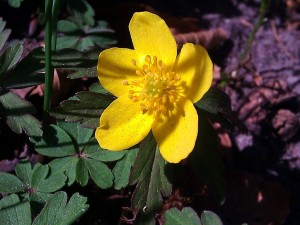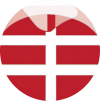
Mön is considered Denmark’s most beautiful island, and this is not least due to the healthy nature and the species-rich flora. In spring the island is covered with primroses and leather flowers and the numerous beech forests with some very old trees and many marked paths make the island particularly interesting for hikers, but also for all other nature lovers.
Möns chalk cliffs â € œMöns Klintâ €, also known as the Mön Cliffs, were created at the same time and in the same way as the chalk cliffs of Rügen. At up to 140 meters, the chalk cliffs are Denmark’s highest cliff and are also responsible for the island’s very calcareous soil, which offers ideal living conditions for numerous plants. In the woods behind the famous chalk cliffs, the Klintenwald, you will find a large variety of rare orchids. Of the 40 species of orchids that are distributed throughout Denmark, 20 different varieties can be admired here, including the purple orchid, the red forest bird and the pyramid orchid. These orchid species can also be found on the municipal meadows of Hovblege and Jydelejet.
In the Klintenwald, however, another very special phenomenon can be observed: the beech leaves have a light green color throughout summer, which is also due to the high lime content of the soil. In other regions, this natural event can only be observed in spring. Also noticeable are the rare shapes of the trees on the steep banks of the island that arise due to the constant easterly wind.
The vast majority of the forest is natural forest under state supervision. As far as possible, changes are deliberately avoided here and nature is left to its own devices: in this way the originality of the forest is preserved and the flora of the island created an ideal basis for life.
The best way to marvel at the variety of plants in Möns is to visit the island between May and August. This is also the time when the climate is most comfortable. The climate on Mön is determined by the meeting of the Baltic Sea and North Sea: it is almost never very hot or very cold. The summer days are long and warm, and uncomfortable temperatures are rarely reached.
The so-called salt marshes are also an attraction for all those who are interested in the flora and fauna of Möns. The salt marshes are an area periodically flooded by the sea, the transition between land and sea, so to speak, and here, too, there is an amazing variety of plants to admire. In addition, a large variety of bird species can be admired here.
And last but not least, the entire island is covered by beautiful pastures and heather areas, which are ideal for exploring on foot, by horse or by bike.
So you don’t have to look for nature on Mön. The Baltic Sea island offers every nature lover a unique experience.
